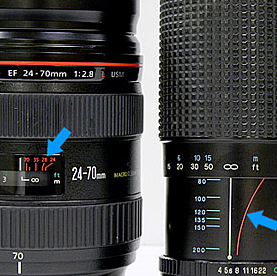*Update: I wrote this post about a year ago and, at the time, I though I had the subject of focusing IR images all figured out. And then it turned out that I didn’t. For more on what I discovered about lens sharpness when making infrared photographs, please read the post entitled, Not the Sharpest Knife in the Drawer when you have the time. And to tell the truth, I am still learning more…
Today’s Post by Joe Farace
Chromatic aberration is the effect produced by the refraction of different wavelengths of electromagnetic radiation through slightly different angles, resulting in a failure to focus. It causes colored fringes in images produced by uncorrected lenses.

How I Made this Shot: With an IR-converted camera you can photograph some action in infrared. Using IR filters will produce too slow of a shutter speed to make a shot like this. Exposure for this image was 1/400 sec at f/9 and ISO, so the shutter speed was up to the job of freezing this cyclist heading toward a bridge I’ve photographed before. (See bottom of page.) The camera used was a Panasonic Lumix G5 that was converted by LifePixel using their Standard IR filter. Lens was the Lumix G Vario 14-45mm f/3.5-5.6 kit lens at 16mm. The RAW file converted to monochrome using Silver Efex with Platinum toning added by PhotoKit.
The infrared difference.

The apparent problem for IR shooters is that most lenses can’t focus infrared wavelengths on the same plane as visible light. That’s why the classical advice when shooting infrared images is that it may be necessary to slightly shift the lens’s focus. Typically, the smaller the lens’ aperture and the longer its focal length the greater this shift will be. That’s why lens manufacturers used to place an infrared mark on their lenses (at right) to help you make this shift.
But that is seldom the case with newer autofocus lenses. When shooting infrared images with my Canon, Lumix or Olympus AF lenses, I put the camera in Aperture Preferred (Av) mode, set the lens aperture at smaller apertures and just shoot expecting the image to be in focus. This technique usually usually works for landscape images and if you’re worried about the effects of diffraction, some experience will show you what worlds best for the lenses you;re using. More about diffraction here. For action shots, like the above, I have to open the aperture a bit—but not too much.
Hyperfocal Focusing
This is a way of focusing when shooting infrared. Hyperfocal distance is the point of focus where any object that’s located between that distance and infinity is in focus. Here’s how it works: You pick an aperture, such as f/16 or f/22, then rotate the focusing ring and set that aperture opposite the infinity mark. On a lens like the 15mm f/4.5 Voigtlander it produces a depth-of-field from about five inches to infinity, which is more than enough to take care of any focus shift that are caused by invisible infrared light waves.
